Born on Lulu Island, near Vancouver, on February 25, 1920, Molly Joan Lamb grew up in a house immersed in the arts. Her father, Harold Mortimer-Lamb, was a mining engineer, photographer and art critic who was an early supporter of the Group of Seven. He hosted salons that attracted Canada’s most celebrated artists, including Lawren Harris, Emily Carr, and J.E.H. MacDonald. Surrounded by creativity, debates on Post-Impressionism, and exposure to international art, Molly’s home nurtured her creativity from a young age.
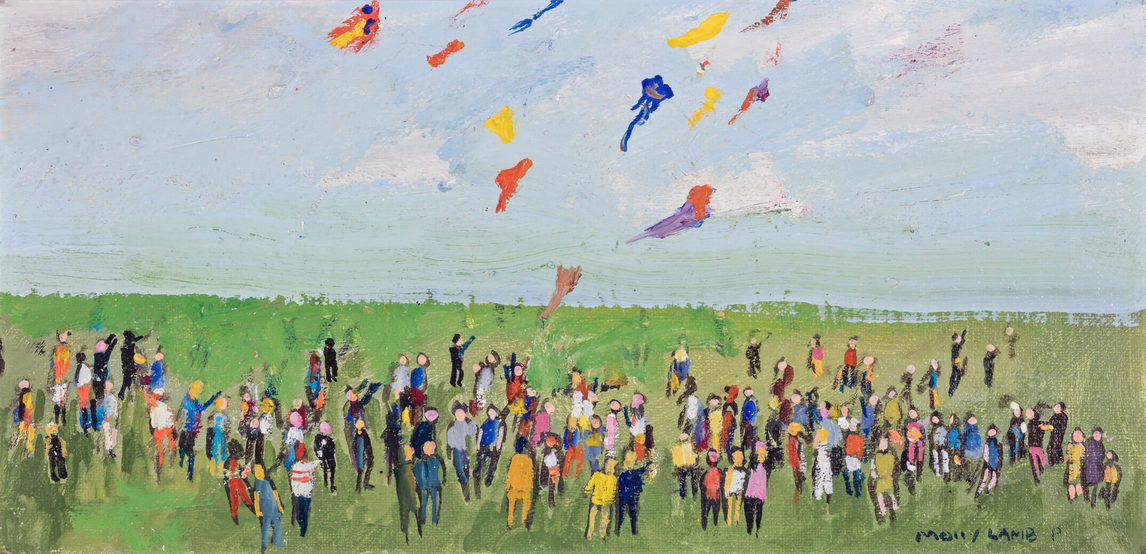
Her mother, Mary Williams, encouraged her independence as well as her love for art. Despite her struggles as a young girl with school due to poor eyesight, Molly’s interest in drawing and painting blossomed, eventually leading her to enroll at the Vancouver School of Art in 1938.
At art school, Molly studied under mentors like Jack Shadbolt, Jock Macdonald, and Frederick Varley. Shadbolt, in particular, encouraged her to explore her artistic voice and pushed her to see beyond simple representation. He stayed as her mentor for years after she graduated. Later she wrote, “His encouragement meant a lot to me. Anything could happen from then on; anything was possible with a little skill and a lot of work—Shadbolt introduced me to a great world.” She was also especially captivated by Paul Cézanne’s mastery of form, colour, and composition, which became an influence to her work. She described seeing his work, “What Cézanne could do with an apple or a glass decanter! One could see layers of watercolour over surfaces and taut blue strokes shattering around the edges, open, moving. Suddenly you weren’t looking at apples or decanters any more, but painting. I almost went crazy.”

In 1942, Molly Lamb joined the Canadian Women’s Army Corps (CWAC), where she found an abundant subject matter for her art. Her sketches and diaries depicted daily life in the barracks, from drills and chores to the camaraderie of her fellow servicewomen. “The whole structure of army life is agreeable to a painter,” she later said in Canadian Art, “and everywhere you turn there is something terrific to paint. There is endless material in one barracks alone, though—one could spend hours at the desk in the main hall, drawing the C.W.A.C.s checking in and out, the new recruits, the fatigue girls in their overalls, the orderly officer.”
 Canteen, Nijmegen, Holland, 1945, oil and ink on canvas by Molly Lamb Bobak
Canteen, Nijmegen, Holland, 1945, oil and ink on canvas by Molly Lamb Bobak
With support from some of her father’s influential friends, Lamb persistently lobbied to become an official war artist. While in Toronto, she reconnected with A.Y. Jackson, who valued her wartime diary for its unique perspective on the experiences of women. As an advisor to the Canadian War Artists Selection Committee, Jackson’s backing was crucial to her appointment. He also introduced her to fellow artists Charles Comfort, Frances Loring, and Florence Wyle. H.O. McCurry, a friend of Lamb’s father, was both the director of the National Gallery of Canada and the head of the Canadian War Artists Selection Committee. Following A.Y. Jackson’s suggestion, Lamb went to Ottawa to meet McCurry and present her drawings. Determined, she kept following up, writing frequent letters and even visiting in person, once hitchhiking to get there. To support her, McCurry allowed her to buy art supplies from the National Gallery at discounted educational prices.
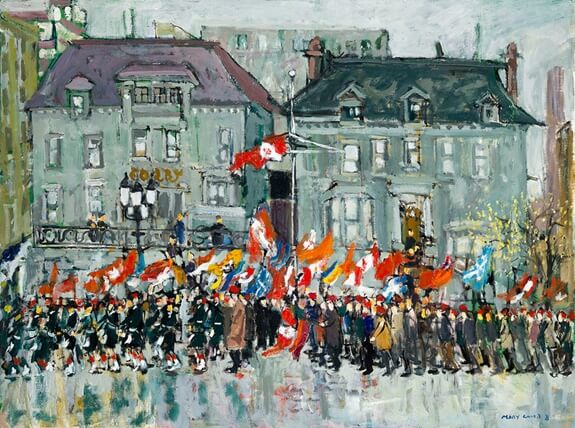
At last, near the end of the war in Europe, Lamb was officially appointed by the Canadian War Artists Selection Committee as a war artist, becoming the only woman to receive this title.
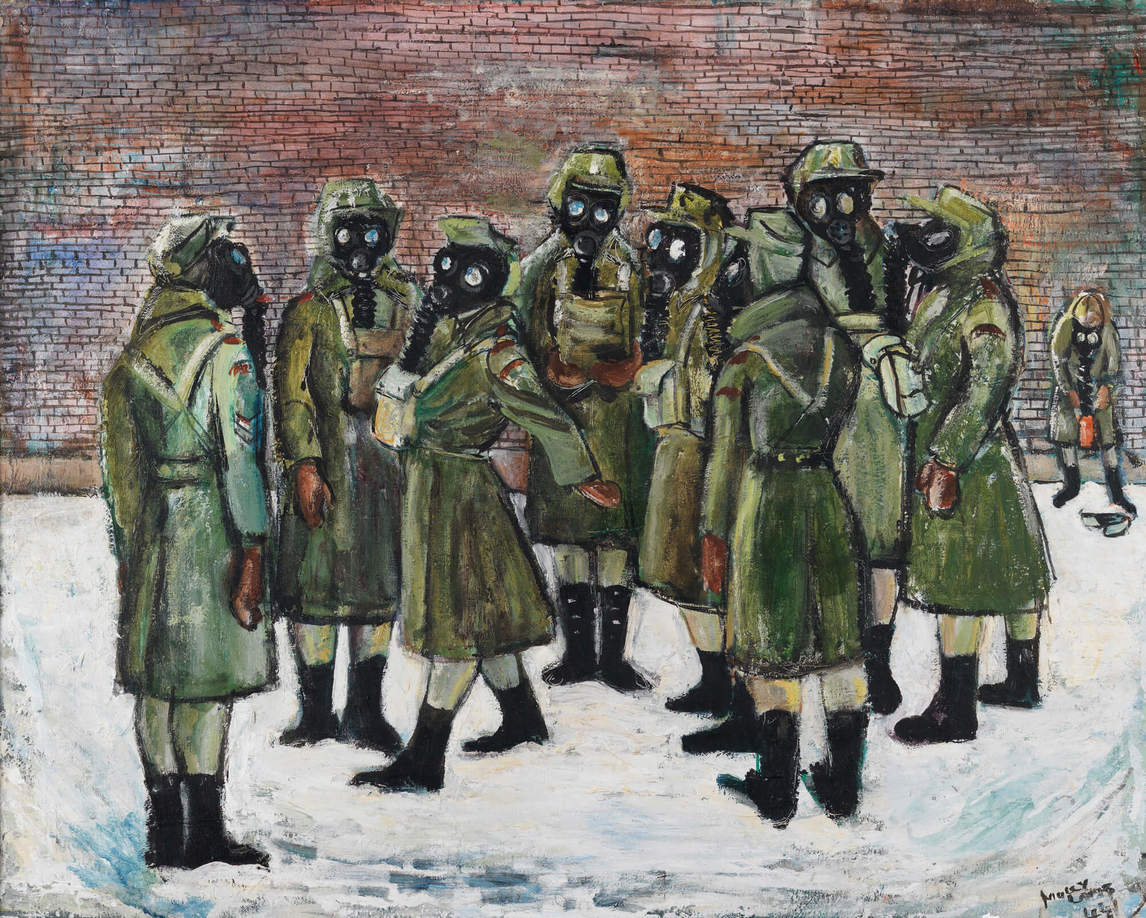
Because women weren’t permitted on the front lines, Molly Lamb was sent to London in June 1945, six weeks after Victory in Europe Day, where she gained invaluable experience as an official war artist. Tasked with capturing the postwar landscape, she shared a studio in High Holborn with fellow artist Bruno Bobak, whom she had just met. During this time, she also connected with several other Canadian war artists, including Alex Colville, Will Ogilvie, George Campbell Tinning, Lawren P. Harris, and Tom MacDonald, maintaining relationships with many of them in the years that followed.
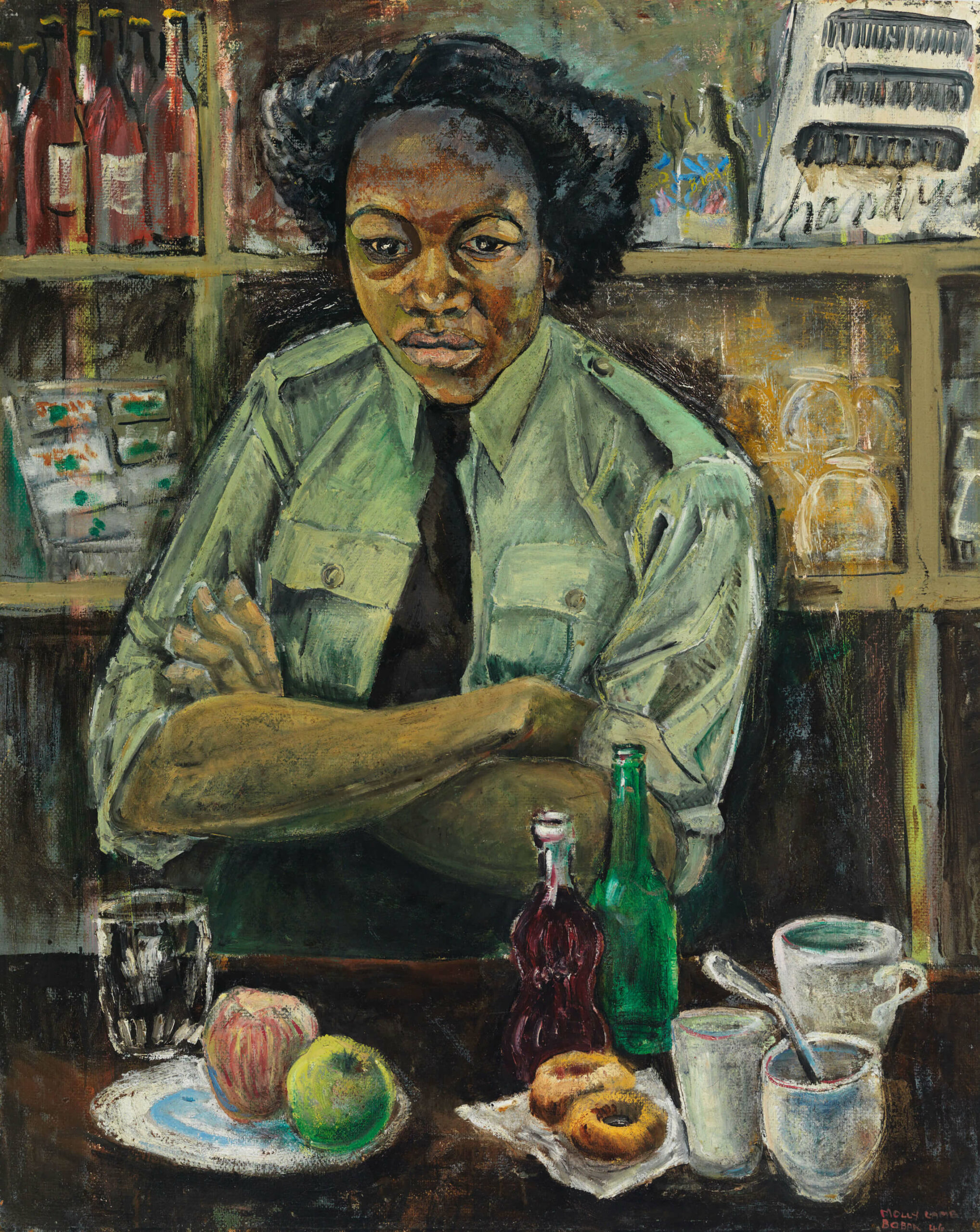 Private Roy, Canadian Women’s Army Corps, 1946, oil on fibreboard by Molly Lamb Bobak
Private Roy, Canadian Women’s Army Corps, 1946, oil on fibreboard by Molly Lamb Bobak
Soon after, Lamb traveled, accompanied by her own driver, through the Netherlands, France, and Germany, documenting scenes of destruction, celebration, and daily life in postwar Europe.
After the war, Molly married Bruno Bobak, and the couple settled in Ottawa before moving to Vancouver and eventually Fredericton. They spent extended periods in Europe, where exposure to modernist painters such as Cézanne, Matisse, and Picasso, along with her husband’s technical guidance, enriched Molly’s art style.
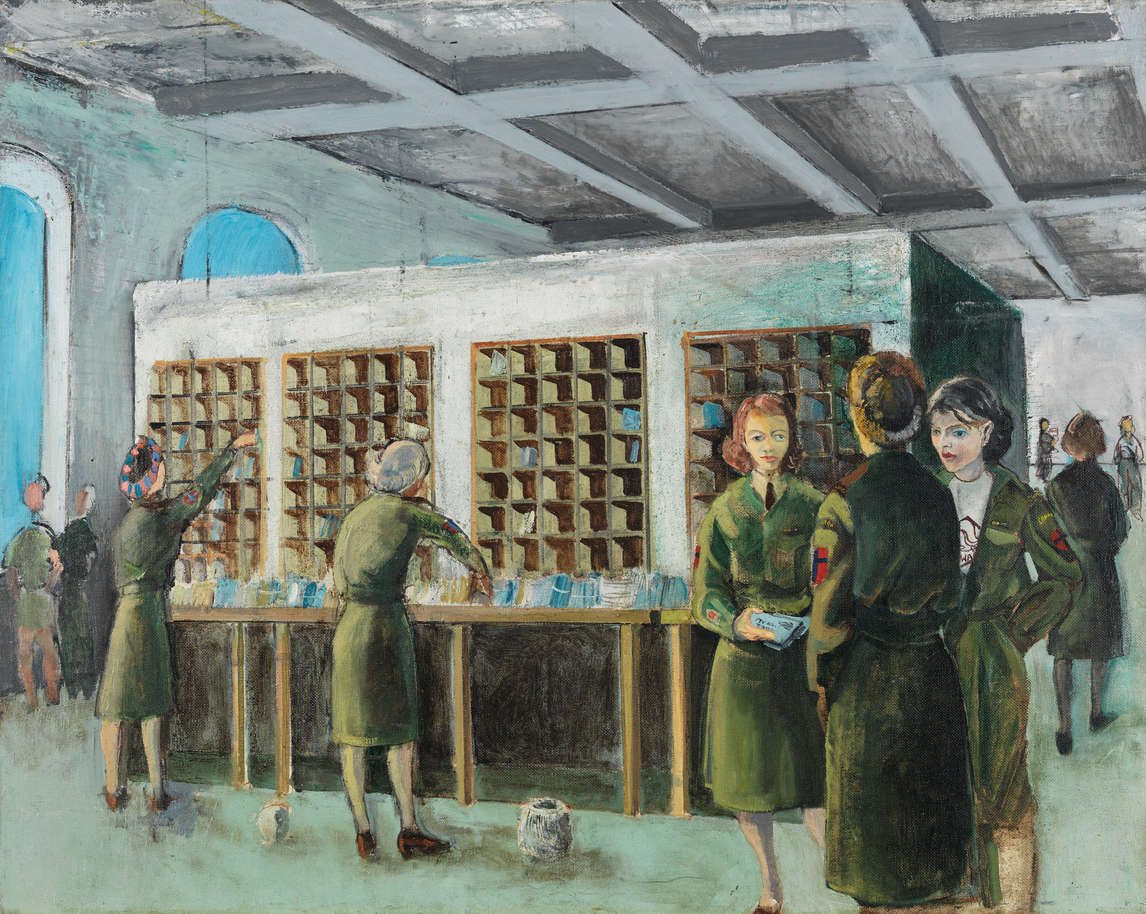
In Fredericton , Molly became a central figure in the local art scene while balancing family life and teaching. Her work expanded to include crowd scenes, landscapes, interiors, and floral still lifes.
Throughout her career, Molly Lamb Bobak maintained a distinctly Canadian perspective by working outside the country’s main artistic hubs of Toronto, Montreal, and Ottawa. Rather than aligning herself with the dominant trends coming from these cultural centres, she developed her own voice and vision, through life in other regions of Canada, especially the Maritimes, where she eventually settled. By choosing to work beyond the traditional art-world power corridor, Lamb Bobak contributed a broader and more inclusive view of Canadian identity, one based in everyday life and regional experience.
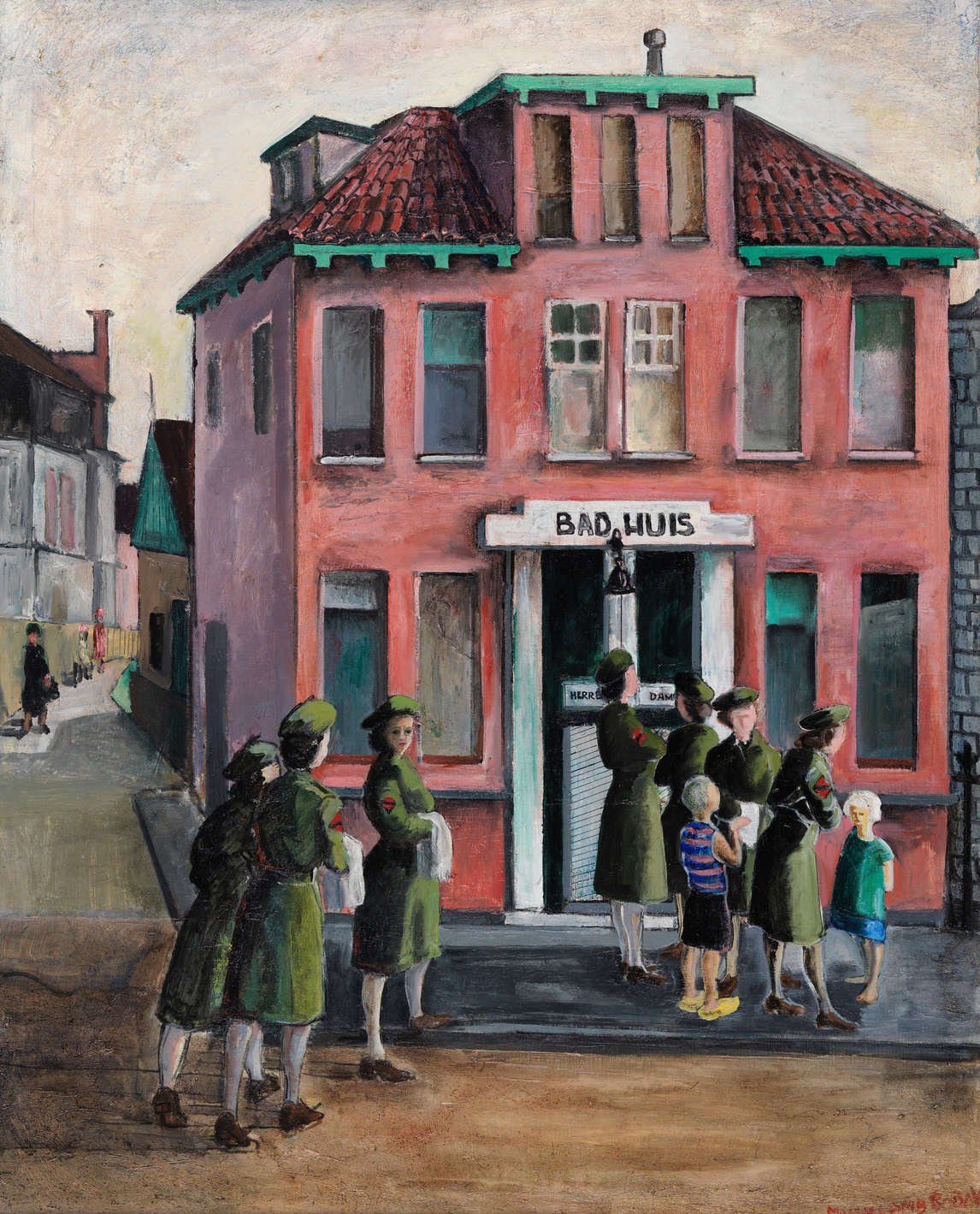
She was elected to the Royal Canadian Academy of Arts in 1973, received the Order of Canada in 1995, and became an early inductee of the Order of New Brunswick in 2002. Even with failing eyesight in her later years, she continued to paint daily and influence new generations of artists through teaching and mentorship.

Number One Static Base Laundry, 1945, oil on canvas by Mary Lamb Bobak
Passing away in 2014 at the age of 94, Molly Lamb Bobak was the last surviving official Canadian war artist, leaving behind a rich legacy of over seven decades of artwork that depicts life, community, and the beauty of the everyday.

Consignment at Rookleys
At Rookleys Canadian Art, we are actively seeking works by Molly Lamb Bobak for consignment, offering consignment rates far lower below what auction houses charge. If you have a painting by Molly Lamb Bobak to consign, please contact us at info@rookleys.com to discuss these opportunities further.